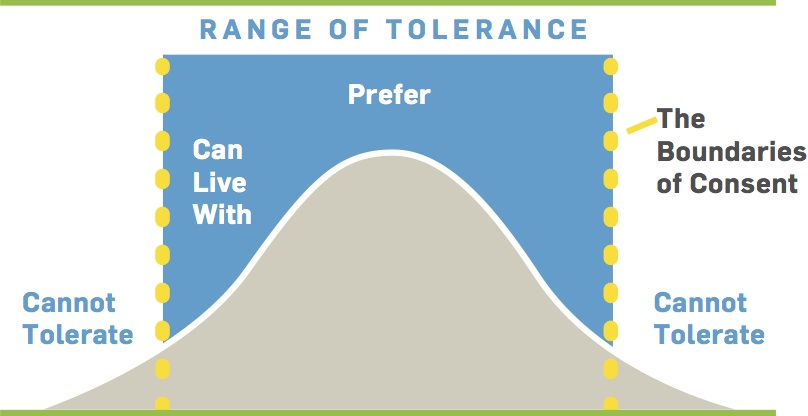Our organizations and networks are systems. If we want to thrive, we need conditions that meet the range of tolerance of all parts of the system. We need governance and decision-making that integrates diversity and fosters equity. Why?

People who work together realize that no one person or entity has the full picture. In order to take action together, we need buy-in and support from all those who are responsible for carrying out decisions, as well as those who are impacted by decisions. People who were not bought into the decision can withhold their support and actively (or passively) resist it. Problems that were ignored in the beginning can be costly to fix later. Future opportunities can be lost when trust or relationships are sacrificed.
Decision-makers can save time in the short run by ignoring when people are out of their range of tolerance — but pay many times over in the long run.
You can think of the range of tolerance like a trout in a mountain stream.
 A trout can live and thrive with some variation in conditions. But, if the water gets too warm or too cold, for example, the trout will not survive or reproduce. We say, “The trout cannot tolerate the conditions in the stream.”
A trout can live and thrive with some variation in conditions. But, if the water gets too warm or too cold, for example, the trout will not survive or reproduce. We say, “The trout cannot tolerate the conditions in the stream.”
At the same time, the trees that shade the stream and keep the temperature acceptable for the trout, also have a range of tolerance in which they thrive and reproduce; as do the host of insects, other fish, crustaceans, leeches, and worms that the trout feeds on; as well as the water plants that give it shelter. To have something as glorious as a mountain stream full of trout requires that conditions meet the range of tolerance of all the interdependent parts of the system.
Our networks and organizations are systems, too. If we want the kind of elegant coordination we see in natural ecosystems, we can use use the framework of the Range of Tolerance as a tool. We can inquire together, and identify the ways forward, that are within the Range of Tolerance of all the parts of our systems.
When group members are getting out of their range of tolerance, it can show up as bad behavior. For example, when board members stop attending meetings, grumble in the parking lot, or break into factions, they are saying they cannot tolerate conditions. Collaborative Decision-making processes takes these problems out of the parking lot and onto the meeting table.
But, is it ever possible to get a diverse group of people to agree? We think not!
Happily, using a tool like the Range of Tolerance of the group, provides a different focus than finding “agreement.” Instead, we find the places of Consent.
Consent-based decision-making means listening to feedback deeply enough for the whole system to adapt. Finding the consent and range of tolerance among all parts of the system — the network, organization or businessk — contributes to resilience and responsiveness, like healthy systems in the natural world.
Cultivate a Culture of Consent
Learn the “why, the what, and the how” of consent decision-making.

